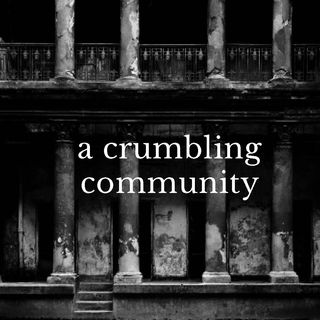
The Amazon Wildfires Are a Product of Environmental Racism
Environmental racism allows industries to endanger black, brown and poor communities with impunity.

The Amazon rainforest has been burning. Before it commanded the world’s attention a few days ago, after São Paulo underwent an apocalyptic midday blackout from the smoke, the rainforest had been burning for weeks, without any dedicated media coverage. In fact, since January 2019, 72,000 forest fires have occurred in the Amazon — an 83% increase compared to the same period in 2018.
The fires are largely a result of widespread deforestation in the Amazon — but the rainforest has borne the brunt of intentional human destruction for centuries. Inhabited mainly by indigenous tribes of the region, the Amazon has been pillaged and illegally deforested with impunity to make room for commercialization of its resources. This directly affects the minority groups that depend on the rainforest — be it harvesting from the land or hunting and gathering from the plethora of Amazonian plant and animal species — for survival. It’s not just the Amazon that’s on fire; it’s the tribes’ livelihoods.
Apathy toward environmental destruction aside, one has to ask — whyhas the inhumane, profit-centric pillaging of the Amazon, also deemed the “lungs of planet Earth,” been going on for so long, without having incited adequate global outrage to drive social awareness and sound environmental policy to protect the forest? Because of environmental racism.
Brazil’s right-wing, climate-change-denying, racist president, Jair Bolsonaro, who ran on the platform of privatizing the Amazon rainforest, has slashed environmental regulations and agencies put in place to protect the wellbeing of the rainforest and the communities that inhabit it. Under his administration, Brazilian environmental activists claim, farmers and ranchers have become increasingly emboldened to start illegal land-clearing fires to free up land for commercial purposes. This lack of regard for the tribes that contribute to, and benefit from, the Amazonian lands, shows prejudice against their existence, and apathy toward their survival, on the policymakers’ part.
A characteristic of environmental racism is also the “frequent siting of environmentally hazardous industries in predominantly minority communities,” according to The Lancet, one of the oldest and most prestigious medical journals in the world. It means “minority residents end up living in more polluted areas with less access to green space than their majority peers.”
The Amazonian tribes have been protesting extensively against Bolsonaro’s policies — for weeks, for years, to no avail. This is also a characteristic of environmental racism: a lack of resources in minority communities inhibits their ability to fight threats to their survival. “Wealthier communities can afford to mount effective opposition to the building of potentially environmentally hazardous sites — with campaigns that are often characterised as taking the ‘Not in my back yard,’ approach — whereas minority communities, who typically have fewer political, economic, and legal means at their disposal, are less able to do so,” according to The Lancet. “The threat of collective opposition tends to drive companies and organizations looking for a site for their hazardous operations down the path of least resistance, further worsening the situation for already disadvantaged communities.”
Related on The Swaddle:
Closeness to Climate Change, Pollution Can Cause Distress, Environmental Grief
Environmental racism is also not just confined to national boundaries. We increasingly see the prejudice shaping environmentally hazardous actions on a global scale: the world produces 50 million tons of electronic waste, for example, only 20% of which is formally recycled, according to the United Nations. The rest is dumped in countries such as India, where it either stays in landfills or is informally recycled — “much of it by hand in developing countries, exposing workers to hazardous and carcinogenic substances such as mercury, lead, and cadmium. E-waste in landfills contaminates soil and groundwater, putting food supply systems and water sources at risk,” according to the UN.
In India, the multinational consumer goods company, Unilever, has been accused of environmental racism by the communities based in Kodaikanal, Tamil Nadu. They allege Unilever has been releasing toxic mercury from its factories into the nearby forest regions and putting its workers’ health at risk — succinctly put in a rap video by artist Sofia Ashraf — and has taken no steps to decontaminate the area. Environmental activists allege Unilever’s environmental regulation policies about their operations are racist; they allege Unilever doesn’t apply the same standards of protection they apply to their industries in Europe, The Hindu reported.
These examples are abundant, in history, and across the world. In southern United States, where the environmental justice movement and the term ‘environmental racism’ seem to have originated, a predominantly African-American town, Warren, was selected to house a toxic waste facility to deal with cancer-causing e-waste dumped on the highways by an electronics manufacturer, The Guardian reported. Since then, it has become apparent that race, socio-economic class, and geographical location play a large part in who gets to live a healthy, toxin-free life and who doesn’t. It’s usually the black and brown communities, the poor, the developing countries that are seen as weak, the ‘other,’ who are not human enough to have their existence and health valued, respected and protected.
“The issues around environmental racism show that environmental and social issues cannot be neatly separated from each other. Resources, legal and financial, need to be made available to those affected so they can be heard when they call this discrimination out for what it is,” according to The Lancet. “True environmental justice cannot be achieved by focusing solely on one’s own back yard.”
Rajvi Desai is The Swaddle's Culture Editor. After graduating from NYU as a Journalism and Politics major, she covered breaking news and politics in New York City, and dabbled in design and entertainment journalism. Back in the homeland, she's interested in tackling beauty, sports, politics and human rights in her gender-focused writing, while also co-managing The Swaddle Team's podcast, Respectfully Disagree.
Related


The Last Courtesans of Bombay: A Crumbling Community
